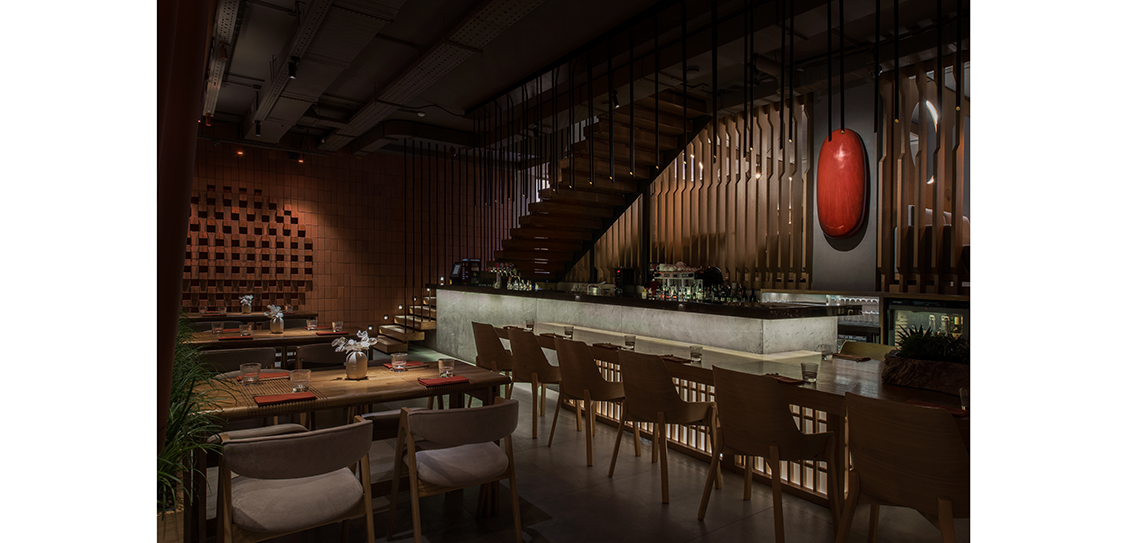The updated interior of the two-storey restaurant will have more open spaces and art objects in a wabi-sabi aesthetic, which is distinguished by simple shapes and the imperfection of natural materials.
In the new restaurant, a community table for 10-12 people sits right in front of the entrance. Close by, there is an illuminated bar counter, an uncharacteristic object for traditional restaurants of this particular chain.
Cosy booths that regular customers enjoy still remain, but the number has been reduced. They are located on the ground floor behind the ornately shaped partitions made of light plywood with round cutouts.
The main area of the dining halls on both floors has been designed as an open space. It is delineated only by metal chiselled "bamboo thickets" with illumination, tubs with potted plants and columns decorated with sculptured concrete tiles.
Terracotta has been chosen as the main colour scheme of the interior. Even the lampshades and teapots that hang above the tables are made from terracotta clay.
There is a relief pattern on the walls that appears as if it has been made of bricks, and there are also convex spirals in some places on the ceiling. The choice for wooden furniture, soft sofas and armchairs has been made in favour of natural discreet colours. The emphasis in furniture design has been also made on reliefs and carvings. They can be found, for instance, on many tabletop fragments in the restaurant.
This neutral colour environment can also boast eye-catching details: bespoke blue ceramic sconces and voluminous red art objects that look like stone eggs. The design is still strongly associated with Japan, but it now has a more modern feel. However, teapots standing on coals like they do in traditional Japanese houses are also present here: an entire showcase in the bar counter is filled with them. The open kitchen with a sushi bar serves as the main decoration of the second floor.
The minimalist Japanese wabi-sabi design and open floor plan will be the defining feature of new Tanuki restaurants.



